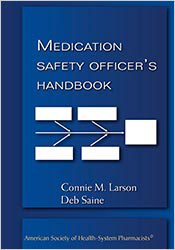Examples of Transformational Change
CHF Discharge Counseling
A study group from a cohort of high-risk patients with congestive heart failure received discharge counseling followed by a home-based intervention after 7 days.
Counseling provided by a pharmacist—nurse care team focused on the need for the medication (i.e., condition the drug was intended to treat) and the importance of adherence. Patients in the study group experienced reduced frequency of unplanned readmissions and out-of-hospital deaths within 6 months of discharge from the hospital compared to patients in the control group. Patients in the control group experienced a 46% greater length of stay when hospitalized. See Stewart S, Pearson S, Horowitz JD. Effects of a home-based intervention among patients with congestive heart failure discharged from acute hospital care. Arch Intern Med. 1998;158:1067-72.
Discharge Counseling and Services (General)
Another study assessed patient satisfaction and outcomes when pharmacists provided patient counseling on all discharge medications, corrected drug-related problems, provided assistance in obtaining medications, and communicated discharge prescriptions to the patient’s pharmacy.
Patient satisfaction was significantly higher in the intervention group (p=0.007). There was also a significant reduction in emergency room visits and unscheduled readmissions with total cost aversion of $14,880. See Dudas V. The impact of follow-up telephone calls to patients after hospitalization. Am J Med 2001;111(9B):26S-30S.
Web-based Communication
Pharmacist care delivered through web-based communications resulted in a significant reduction in blood pressure (BP) as compared to usual care. Patients were randomly assigned to home blood pressure monitoring and secure patient web-based training only, usual care, or home blood pressure monitoring and secure patient web-based training plus pharmacist care delivered through web-based communication.
The home blood monitoring and web-based training group had a non significant increase in the percentage of patients with controlled BP compared with usual care (p=0.21), the addition of web-based pharmacist care to home blood monitoring and web-based training significantly increased the percentage of patients with controlled BP compared with usual care (p=<.001) and home BP monitoring and patient web-based training (p= <.001). See Green BB, Cook AJ, Ralston JD, et al. Effectiveness of home blood pressure monitoring, web communication, and pharmacist care on hypertension control: a randomized controlled trial. JAMA. 2008;299(24):2857-67.
Chronic Disease Care
A pharmacist—nurse team intervention resulted in a significant drop in blood pressure even among patients with diabetes and hypertension whose disease was relatively well controlled.
Care and tools provided by the pharmacist—nurse team included a blood pressure wallet card, cardiovascular risk reduction education and counseling, referral to the patient's primary care physician, a 1-page summary sent to the physician reinforcing guidelines for hypertension and diabetes, and four follow-up visits throughout a 6-month period. Patients in the control group received a wallet card, pamphlets, general diabetes advice, and usual care by their physician. The intervention group had a greater reduction in blood pressure at 6 months compared with patients in the control group (p=.008). See McLean DL, McAlister FA, Johnson JA, et al. A randomized trial of the effect of community pharmacist and nurse care on improving blood pressure management in patients with diabetes mellitus: study of cardiovascular risk intervention by pharmacists. Arch Intern Med. 2008;168(21):2355-61.


